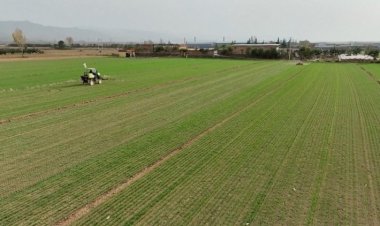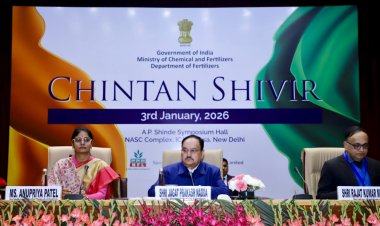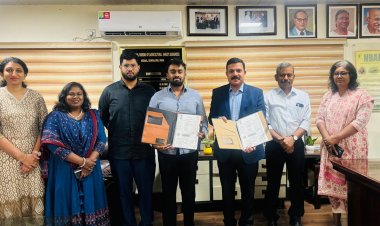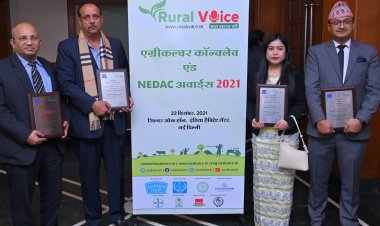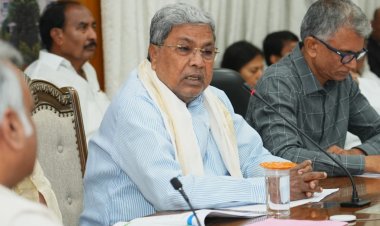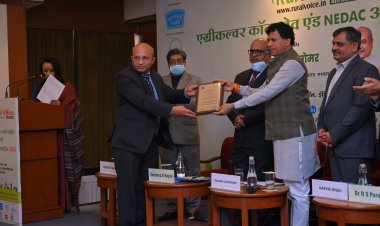Roadmap to increase pulse production ready, India to be self-sufficient by 2027: Agri Minister
Union Agriculture Minister Arjun Munda and Union Food and Commerce Minister Piyush Goyal formally inaugurated the four-day Pulses24 conference organized by Global Pulse Confederation (GPC) and National Federation of Agricultural Cooperative Marketing (NAFED).
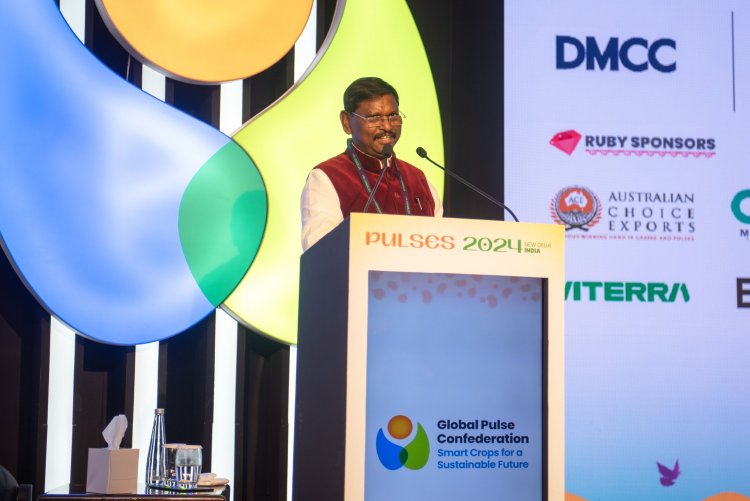
Union Agriculture Minister Arjun Munda and Union Food and Commerce Minister Piyush Goyal formally inaugurated the four-day Pulses24 conference organized by Global Pulse Confederation (GPC) and National Federation of Agricultural Cooperative Marketing (NAFED).
Addressing the conference, Munda said that the Government of India is making continuous efforts to reduce dependence on pulse imports. A roadmap has been drawn up to increase pulse production. The government's efforts have made significant progress in pulses crops since 2014. India has become self-sufficient in gram and many other pulses. There is a slight shortage in arhar (tur) and urad. Efforts are being made to achieve self-sufficiency in pulses by 2027.
The agriculture minister said that while seed supply of new varieties of pulses is being increased, the focus is on increasing the area of arhar and urad. The area of lentil has increased by about 1,00,000 hectares this rabi season. A portal has been launched for procurement of arhar. Farmers can register on this portal and sell their produce to NAFED and NCCF at Minimum Support Price (MSP) or prevailing market rate, whichever is higher.
Munda said new technology and improved seeds are being provided to farmers to increase pulse production. To increase availability of quality pulse seeds, 150 pulses centers have been opened under NFSM, which have produced over one lakh quintals of quality pulse seeds. Munda also emphasized the need for rapid dissemination of climate-friendly varieties and other technologies.
Speaking on the occasion, Union Food and Consumer Affairs Minister Piyush Goyal said the government is encouraging farmers to grow pulses and the MSP of pulses has been increased significantly. Pulse production increased from 17 million tonnes in 2014 to more than 26 million tonnes now. The procurement of pulses has increased 18 times in the last 10 years. The central government is taking all possible measures for a bright future of farmers.
Goyal said that to promote agricultural diversification and production through pulses, the government is ready to enter into five-year contracts through NAFED and NCCF for assured purchase of pulses from farmers.
The GPC conference is being held in India after 18 years. The Pulses24 conference will continue till February 17 at the Taj Palace in New Delhi. More than 700 delegates from nearly 50 countries are participating in the event.
The launch of Pulses24 was attended by Ethiopian Trade Minister Kasahu Gofe Balami, Consumer Affairs Secretary Rohit Kumar Singh, GPC President Vijay Iyengar, NAFED President Dr. Bijendra Singh, MD Ritesh Chauhan, Additional Secretary (Agriculture) Shubha Thakur, senior officials of the Center and States, Presidents of National Cooperative Unions - MD, office bearers of National Unions of Farmers and Traders, millers, exporters and importers.
World Pulses Day celebrated
To encourage production and consumption of pulses, the Global Pulse Confederation (GPC) and NAFED celebrated World Pulses Day on February 14. GPC President Vijay Iyengar said the more we learn about pulses, the more we know about their fantastic potential to support our agri-food systems…Pulses promote soil health, rebalancing and regenerating soils while providing nutrient-rich livelihoods, higher yields and increased food security.
US Agriculture Ambassador Clay Hamilton talked about India’s growing population and increasing demand and emphasized on ensuring that pulses have a place in the Indian market that is even stronger than it is now.
Sunil Kumar Singh, AMD, NAFED, said: “When you grow more pulses, then availability increases which also increases affordability. Therefore, our effort as a community of farmer organizations, business, industry policy-makers and all stakeholders should strive to create an environment where sustainability is ensured through high production, low cost and high consumption."



 Join the RuralVoice whatsapp group
Join the RuralVoice whatsapp group

















